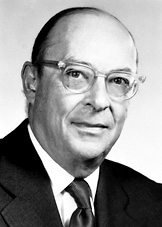John Bardeen
Claimed by Alexis Jacob (ajacob30) 12/2/2015
John Bardeen was an American physicist who was cowinner of the Nobel Prize for physics in 1956 and 1972. The 1956 Nobel Prize was for the joint invention of the transistor with William B. Shockley and Walter H. Brattain. The 1972 Nobel Prize was for developing the theory of superconductivity with Leon N. Cooper and John R. Schrieffer [1].
University Education and Career
Bardeen earned his bachelor's and master's in electrical engineering at the University of Wisconsin, Madison. He received his doctorate in mathermatical physics from Princeton University in 1936. He later became a staff member at eh University of Minnesota, Minneapolis from 1938 to 1941. During World War II, he served as principal physicist at the U.S. Naval Ordinance Laboratory in Washington, D.C. From 1951 to 1975, Bardeen served as a professor of electrical engineering and physics at the University of Illinois, Urbana-Champaign [2].
Scientific Contribution
In 1945, Bardeen joined Bell Laboratories where he researched the electron-conducting properties of semiconductors with his colleagues, Brattain and Shockley. Together on Dec. 23, 1947, they began the electronic revolution with the creation of the transistor. This device allowed computers to be manufactured with smaller and more accessible parts [3]. In the early 1950s, Bardeen continued research on superconductivity at near absolute temperatures. He created the BCS theory, with Cooper and Schrieffer, to explain the disappearance of electrical resistance in materials near such extreme temperatures [4].
See also
References
External links
http://www.britannica.com/biography/John-Bardeen
http://www.nobelprize.org/nobel_prizes/physics/laureates/1972/bardeen.jpg
